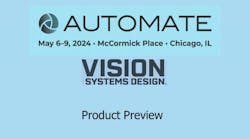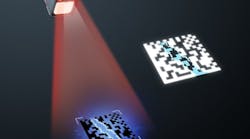Wandering around a trade show after it closes can reveal some important facts about machineVision Systems Design, especially of those that work tirelessly to ensure their products are presented in the best light. At this year's AIA Vision show in Boston, I came across no less than five engineers from National Instruments sitting on the floor of their booth sorting different colored marbles at 5:30 PM - hours after the show had been closed to attendees.
After making a few remarks about their activities, I had to ask the reason why. At the show, the company had decided to demonstrate the power of using an FPGA in the company's embedded vision system. In the design, I/O functions are performed using the FPGA, reducing system latency and jitter to sort the marbles (http://bit.ly/1geKL1N). But why were five engineers sitting around sorting marbles?
The problem, it seems was not with any of NI's hardware but with a mechanical failure one of the relays used in the system. Thus although the system recognized brown colored marbles, it was incapable of ejecting the balls into the proper bin.
To make the demo more presentable, the improperly colored balls needed to be removed from the system. Although this was rather amusing, it did highlight one of the most and perhaps overlooked considerations in designing such systems.
To build such systems, developers must not simply employ those with an understanding of optics, lighting, computer systems and software. More often, it is the mechanical design engineer that is faced with the task of ensuring that the product to be inspected and rejected from the system is properly positioned and eliminated from the automation process.
To inspect the surface of golf balls, for example, Strategic Automation developed a patented method of rotating each ball over three perpendicular axes to properly orient the ball for inspection that is performed by an array of linear grippers (http://bit.ly/1qwxSEv).
In this issue, you can also read of a patented air-slide design from Logical Systems that provide a means to present plastic caps to a vision inspection system. Using this air-slide technique, the conveyor allows plastic caps running at production rates as fast as 1200 parts/min and sizes ranging from 20-110mm to be separated at high-speed while conserving factory floor space (see page 25).
My father, himself a mechanical design engineer, would have appreciated the innovations that combined electronic and mechanical systems can bring to automation. Perhaps, however, it is time to give more credit to the mechanical engineers involved in building such systems.
[email protected]
Vision Systems Articles Archives







